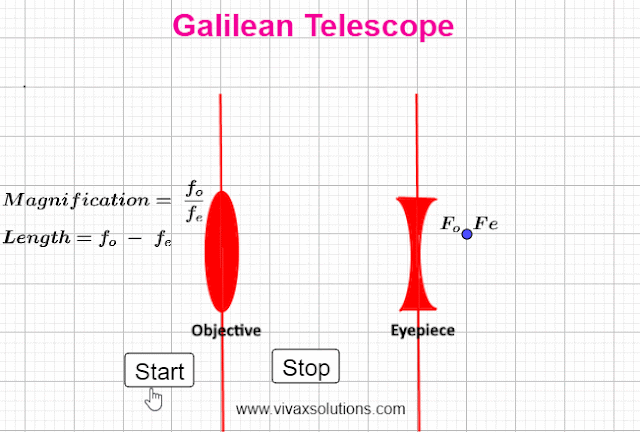The Galilean Telescope was invented by the legendary Italian physicist, Galileo Galilei in 1609.
It is a simple telescope consisting of a convex lens and a concave lens; they act as the objective and eyepiece respectively.
With the aid of his invention, Galileo managed to look at Jupiter’s four largest satellites, spots on the Sun, phases of Venus, and hills and valleys on the Moon.
It's final image, unlike in astronomical telescopes, is erect. As a result it can be used to look at objects on the Earth too.
If the focal length of the two lenses are fo and fe respectively, Magnification in normal adjustment = fo / fe
Length of the telescope = fo - fe
One of the significant disadvantage, however, is the small field
view that in turn makes it difficult to view the images. Unfortunately, the relatively shorter length cannot compensate for this drawback.
For interactive practice, you can use the following applet:






0 comments:
Post a Comment